For reasons of time I miss the part 3 of this…there we go.
March 20th 1944. Rudel flies an attack on the bridge at Jampol. The bridge is destroyed despite strong defense fire. A Ju 87 is met at the engine and must make an emergency landing some kilometers eastward the Dnjestr. Rudel decides to save the crew. (Would be the seventh, which he would take out.) Rudel lands, but this time he cannot start again. The airplane sank in the mud too deeply.
Nothing different one remains for the two dive bomber crews to swim than by the icy Dnjepr. His friend and companion with 1400 raids, technical sergeant Erwin Hentschel sunk in the icy water.

Rudel had to flee about 50 km across russian territory, before discovering a german rearguard. Here his the handsketch over the dangerous and arduous escape route.
22.03.1944 arrived again at the III. group *
29.03.1944 Oak leaves with swords and brilliants
*
01.06.1944 2000. Feindflug
2000. enemy flight
*
06.08.1944 Rudel obtains the 300th tank “kill”.
The table of Rudel in ocation of his 2000th combat mission.

From early 1944 to the end of the war, Rudel also started to flight in FW-190 aircraft, especially with the attack variants F y G.

With this aircraft managed to shoot dowm 6 enemy aircraft. In the late stages of the war it had assigned a Fw-190D-9 Dora also.
He went on to become the most highly decorated combatant in Germany, earning by early 1945 the German Cross in Gold, the Pilots and Observer’s Badge with Diamonds, the Close Combat Clasp with 2000 sorties in Diamonds, and the only holder of Knight’s Cross of the Iron Cross with Golden Oak Leaves, Swords, and Diamonds.
In 2th february of 1945 one shell of 40 mm flak hit the cockpit of the Stuka flew by Rudel shattering his the lower right leg . Forced landing, on-board contactor squadron physician Dr. Gadermann saves Rudel from the bleeding. Amputation of the right lower leg.
Rudel was then taken to the hospital in Berlin, where he had an artificial limb fitted and then returned to his squadron. In the last days of the war, Colonel Rudel commanded the oldest and the best known close assault / support Stuka group - Schlachtgeschwader 2 Immelmann. He was still operating with his unit in last days of war on the Eastern Front. At the end of the war, Rudel wanted to fly a suicide attack with his squadron but hissuperior ordered him not to take off because “he might be needed later”, which might have been the only reason why he didn’t do so. He also volunteered to fly his Stuka into Berlin in May of 1945 to rescue Hitler from the Red Army.
On May 8th of 1945, when Germany surrendered, Colonel Hans Rudel who was in Bohemia, flew his last mission in Ju-87 Stuka. He managed to contact American forces and arranged for himself and other planes to fly over to Kitzingen airfield (near Wurzburg) in the American zone, escaping the capture by the Soviets.Afterwards, Hans Rudel was interrogated first in England and then in France and eventually returned to hospital in Bavaria for convalesce.
The last Stuka of H.U.R:

Rudel left the Bavarian hospital and started working as a haulage contractor and in 1948, left for Argentina, where he worked for the State Airplane Worksand organized with other escaped Nazis a NSDAP party-like structure.
In 1951, Rudel published two booklets in Buenos Aires, “Wir Frontsoldaten zur Wiederaufrüstung” (We Frontline Soldiers and Our Opinion to Rearmament of Germany) and “Dolchstoß oder Legende” (Daggerthrust or Legend). In the first book, Rudel claims to speak for all frontline soldiers stating that they would fight again against the Bolsheviks and that Germany’s “Lebensraum” (Living Space) is in the East.
Even without a leg, he remained an active sportsman, playing tennis, skiing and even climbing the highest peak in the Americas, Aconcagua (6,959 metres (22,831 feet)), as well as three times up the highest volcano on Earth, Llullay-Yacu in the Argentine Andes (6,920 meters). Rudel’s input was also used during development of A-10 attack craft.
In his second book, Rudel condemns notonly all the soldiers who tried to kill Hitler as traitors, but also the staff officers of the Wehrmacht stating that both groups were directly responsible for the defeat. Rudel condemns soldiers because the turmoil caused by the assassination allowed the Allied forces to succeed with the Invasion of Europe, while he condemns the staff officers of the Wehrmacht because they could not see Hitler’s genius in warfare and worked silently against him.
Those two booklets were followed by some more of similar nature.Hans-Ulrich Rudel eventually returned to Germany in early 1950s and in 1953, published his war diary entitled “Trotzdem” (Nevertheless). There was a discussion in Germany if it should be allowed that his diary was published, because he was known as a Nazi, but in 1953, it was no longer that bad to be a Nazi.
Most people wanted to forget, mostly their own part of the story, while some Nazis became politicians and businessmen and the Witschaftswunder (The rise of the industry and economy) made the Germans interested in other things. Rudel continued his sporting activities and became a candidate for the Deutsche Reichspartei (DRP) an ultraconservative party but was unsuccessful. The “Stuka Ace” died in Germany in 1982. In 1984, his diary was published again and two of the greatest Allied fighter pilots, Douglas Bader and Pierre Clostermann wrote a warm and praising foreword to this edition, surely being unaware of Rudel’s political activities


Sources:
http://en.wikipedia.org/wiki/Hans-Ulrich_Rudel
http://www.achtungpanzer.com/gen9.htm
http://fw190.hobbyvista.com/kitzingen4.htm
http://www.pilotenbunker.de/Stuka/Rudel/rudel.htm



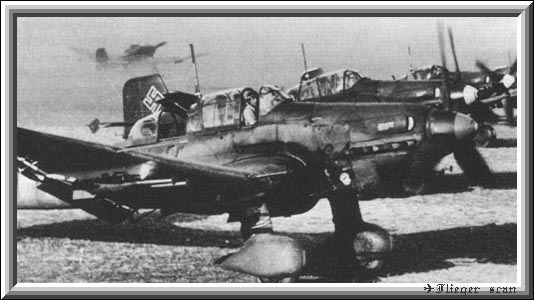


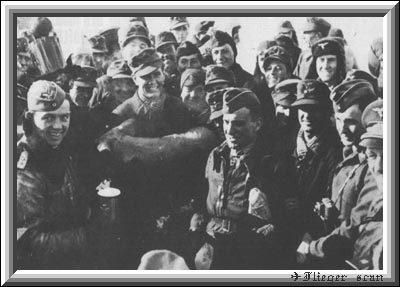
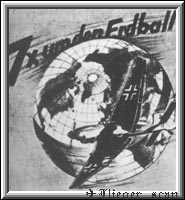
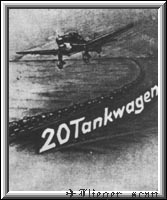
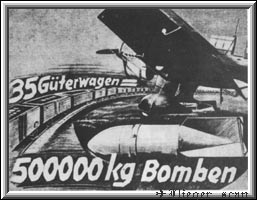
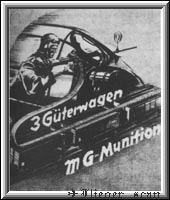
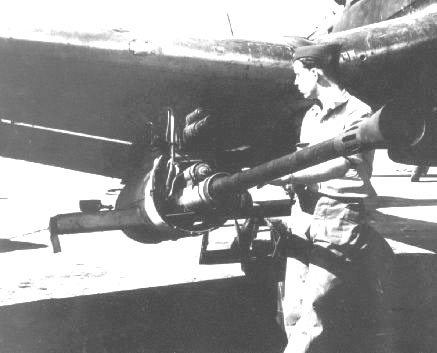
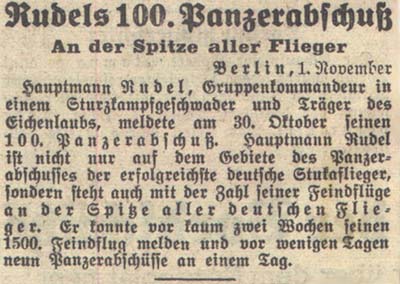







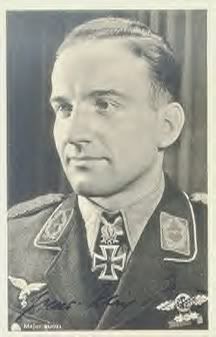
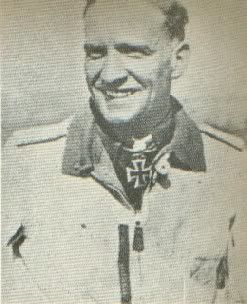
 )
)





